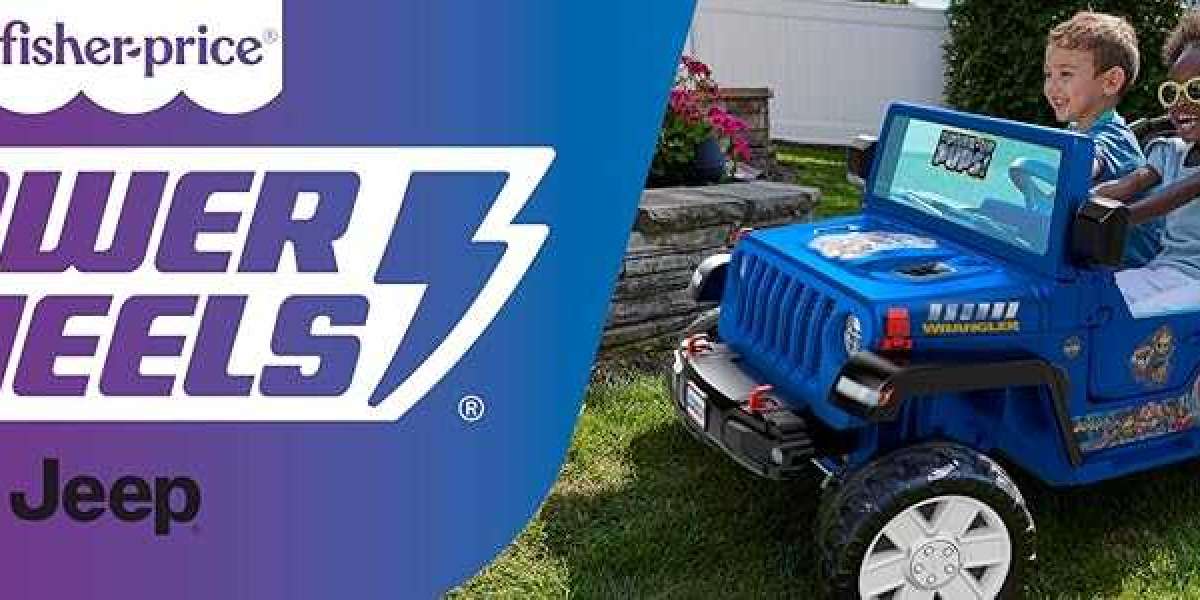Power Wheels are a source of joy for kids, mimicking the thrill of real vehicles. However, just like any other electrical device, Power Wheels can develop issues over time, especially with their electrical systems. This article provides a step-by-step guide to troubleshooting and fixing common Power Wheel electrical problems. Whether you're dealing with a non-responsive vehicle or erratic behavior, these tips will help get your child's ride back in action.
Understanding the Basics of Power Wheel Electrical Systems
Before diving into troubleshooting, it’s essential to understand the key components of a Power Wheel's electrical system:
- Battery: Powers the entire vehicle.
- Wiring: Transmits electricity from the battery to other components.
- Motor: Drives the wheels.
- Fuse or Circuit Breaker: Protects the system from overloading.
- Pedal and Switches: Control the flow of electricity to the motor.
Knowing how these components work together will help you identify the root cause of any issue.
Common Electrical Problems in Power Wheels
Some of the most common electrical issues include:
- Vehicle not starting.
- Motor running but wheels not moving.
- Intermittent performance.
- Battery not charging or holding a charge.
- Burnt-out fuse or circuit breaker tripping frequently.
Tools You’ll Need
To troubleshoot and fix Power Wheel electrical issues, gather the following tools:
- Multimeter (for testing electrical connections)
- Screwdrivers
- Wire strippers and electrical tape
- Replacement parts (battery, fuse, switches, etc.)
- Soldering kit (if wiring repairs are required)
Step-by-Step Troubleshooting Guide
1. Check the Battery
The battery is often the culprit in Power Wheel malfunctions. Follow these steps to inspect it:
Test the Battery
- Use a multimeter to check the voltage. A fully charged 12V battery should read approximately 12.6 volts.
- If the reading is below the rated voltage, try charging the battery fully and retesting.
Inspect the Connections
- Ensure the battery terminals are clean and free of corrosion.
- Tighten any loose connections, as they can disrupt the power flow.
Replace the Battery
If the battery fails to hold a charge even after proper charging, it may need replacement.
2. Inspect the Fuse or Circuit Breaker
A blown fuse or tripped circuit breaker can interrupt the electrical flow:
Check the Fuse
- Locate the fuse box (usually near the battery).
- Remove the fuse and inspect it for signs of damage or discoloration.
Replace the Fuse
- If the fuse is blown, replace it with one of the same rating. Using a higher-rated fuse can cause damage to the system.
Test the Circuit Breaker
- If your Power Wheel has a circuit breaker, press the reset button to see if it resolves the issue.
3. Examine the Wiring
Loose or damaged wires can prevent electricity from reaching the motor:
Inspect for Damage
- Visually inspect the wiring for signs of fraying, cuts, or exposed wires.
- Check connectors to ensure they are firmly attached.
Repair or Replace Damaged Wires
- Use wire strippers to remove the damaged portion of the wire.
- Splice new wires and secure them with electrical tape or connectors.
- For a more permanent fix, solder the connections and use heat-shrink tubing.
4. Test the Switches and Pedal
Faulty switches or pedals can disrupt the flow of electricity:
Test the Throttle Pedal
- Remove the pedal assembly and use a multimeter to check for continuity when the pedal is pressed.
- If there is no continuity, replace the pedal assembly.
Inspect Forward/Reverse Switches
- Test the switches with a multimeter for proper operation.
- Clean the contacts if they are dirty or corroded, or replace the switch if it’s not functioning.
5. Inspect the Motor
If the battery, wiring, and switches are in good condition, the motor may be the issue:
Test the Motor
- Disconnect the motor and connect it directly to the battery to see if it spins.
- If the motor doesn't work, it may need cleaning or replacement.
Clean the Motor
- Open the motor casing (if possible) and clean the brushes and commutator using a soft cloth.
- Check for debris or obstructions that might be preventing the motor from spinning.
Replace the Motor
- If cleaning doesn’t help, replace the motor with a compatible one.
6. Test the Charger
Sometimes the problem isn’t with the Power Wheel but with the charger:
Inspect the Charger
- Check the charger for visible signs of damage, such as frayed wires or a loose plug.
- Use a multimeter to test the output voltage. It should match the rated output on the charger label.
Replace the Charger
- If the charger isn’t delivering the correct voltage, replace it with a new one compatible with your Power Wheel.
Preventative Maintenance Tips
To avoid future electrical issues, practice these maintenance tips:
- Regularly Charge the Battery: Avoid letting the battery sit in a discharged state for extended periods.
- Inspect Connections: Periodically check and tighten all electrical connections.
- Store Properly: Keep the Power Wheel in a dry, cool place to prevent moisture damage.
- Follow Weight Limits: Overloading the vehicle can strain the motor and electrical components.
When to Seek Professional Help
If you’ve followed all the steps above and the Power Wheel still isn’t functioning, it may require professional repair. Contact the manufacturer’s customer support or a certified technician for assistance.
Final Thoughts
Troubleshooting and fixing Power Wheel electrical issues can seem daunting, but with patience and the right tools, most problems can be resolved at home. By understanding the components, identifying the symptoms, and following a systematic approach, you can restore your child’s ride to full functionality. Regular maintenance will also ensure that these issues are minimized in the future.
With these tips, you’re equipped to tackle almost any Power Wheel electrical problem. Happy troubleshooting!








